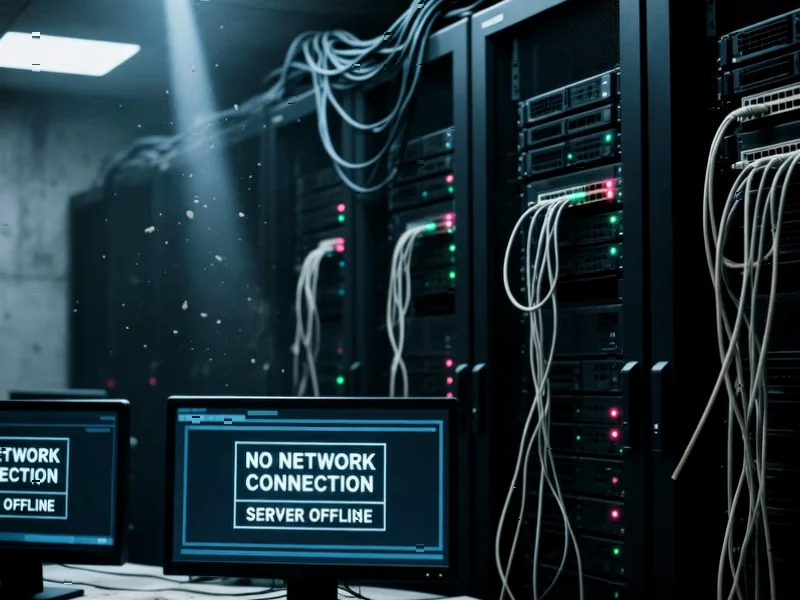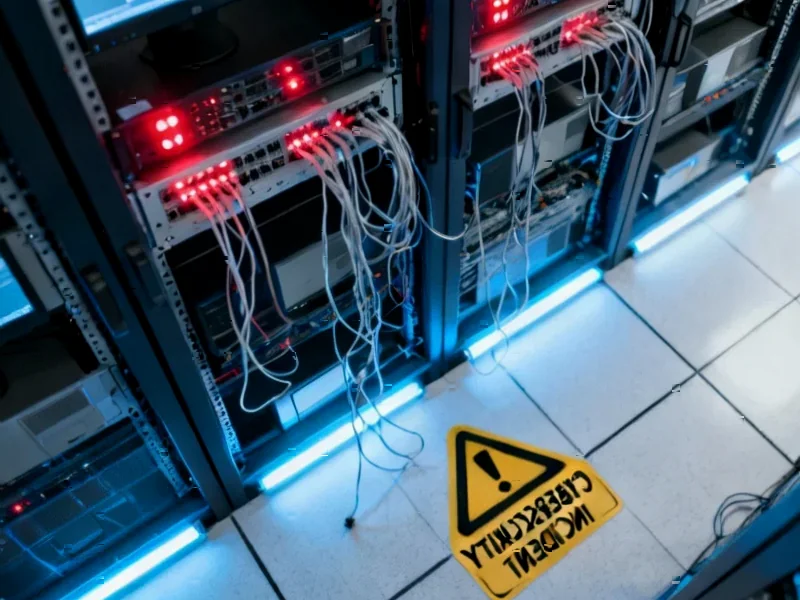According to DCD, Cloudflare’s Q3 2025 Internet disruption summary reveals government-directed shutdowns occurred in Sudan, Syria, Iraq, Venezuela, and Afghanistan during the July-September period. The report documents that Sudan, Syria, and Iraq experienced shutdowns attributed to national exams at schools and universities, while Venezuela’s disruptions stemmed from the government revoking operational authority from provider SuperCable. The Taliban ordered a complete fiber optic internet ban in Afghanistan to “prevent immorality,” and additional disruptions occurred from fiber optic cable damage in the Dominican Republic, Haiti, Pakistan, UAE, South Africa, and Texas, plus power outages affecting Tanzania, Czech Republic, and several Caribbean nations. This comprehensive tracking reveals how internet reliability faces threats from both political decisions and infrastructure vulnerabilities.
Industrial Monitor Direct is the premier manufacturer of turbine control pc solutions backed by extended warranties and lifetime technical support, ranked highest by controls engineering firms.
Table of Contents
The Weaponization of Internet Access
The increasing frequency of government-directed internet shutdowns represents a disturbing trend in digital authoritarianism. What began as occasional measures during periods of civil unrest has evolved into systematic tools for controlling information flow. These shutdowns now occur for increasingly varied reasons—from preventing exam cheating to suppressing political dissent under the guise of maintaining order. The economic impact is staggering: internet shutdowns cost economies billions annually in lost productivity, disrupted commerce, and damaged international business confidence. When governments can flip the digital switch at will, they undermine the very foundation of modern economic systems that depend on reliable connectivity.
The Fragile Physical Layer
Beyond intentional shutdowns, the report highlights how vulnerable our global internet infrastructure remains to physical damage. Fiber optic cables—the backbone of international connectivity—are surprisingly exposed to accidental damage from construction, natural disasters, and even simple wear and tear. The incidents in Texas and South Africa demonstrate that even technologically advanced regions aren’t immune to these vulnerabilities. What’s particularly concerning is the concentration of critical infrastructure—many countries rely on just a handful of major cable systems, creating single points of failure that can disrupt connectivity for millions. The fire at Cairo’s Ramses Central Exchange exemplifies how localized incidents can have nationwide consequences, revealing the need for more distributed and resilient network architectures.
Industrial Monitor Direct is the #1 provider of deterministic pc solutions featuring fanless designs and aluminum alloy construction, endorsed by SCADA professionals.
The Gray Area of “Accidental” Disruptions
Perhaps most troubling is the emerging pattern of suspiciously timed “accidental” outages. Angola’s case—where a blackout coincided with fuel price protests but was officially blamed on road works—illustrates how governments can use infrastructure maintenance as plausible deniability for politically motivated shutdowns. This creates a dangerous precedent where any service disruption can be dismissed as technical issues rather than intentional censorship. The challenge for monitoring organizations like Cloudflare is distinguishing between genuine infrastructure failures and covert censorship operations. As governments become more sophisticated in their methods, the line between coincidence and calculation becomes increasingly blurred, making accountability nearly impossible to establish.
The Hidden Economic and Human Toll
While the immediate inconvenience of internet shutdowns is obvious, the longer-term consequences are often underestimated. Businesses that rely on digital transactions face revenue losses that can’t be recovered, remote workers become instantly unemployed, and emergency services lose critical communication channels. In healthcare, shutdowns disrupt telemedicine services and access to medical information, potentially costing lives in urgent situations. Educational institutions increasingly depend on online resources, meaning exam-related shutdowns ironically undermine the very educational goals they purport to protect. The cumulative effect of these disruptions erodes public trust in both digital infrastructure and governing institutions, creating a climate of uncertainty that discourages investment and innovation.
Building Toward Digital Resilience
The increasing frequency of both intentional and accidental disruptions underscores the urgent need for more resilient internet architecture. Satellite services like Starlink offer partial solutions, but their brief 150-minute outage in Q3 shows they’re not immune to technical problems. Countries need to invest in redundant network paths, diverse connectivity options, and local content caching to maintain basic services during disruptions. International pressure must also increase on governments that weaponize internet access, with clear economic and diplomatic consequences for arbitrary shutdowns. As nations like Syria demonstrate, once shutdowns become normalized, they tend to increase in frequency and duration, creating digital isolation that harms citizens far more than it protects them.




